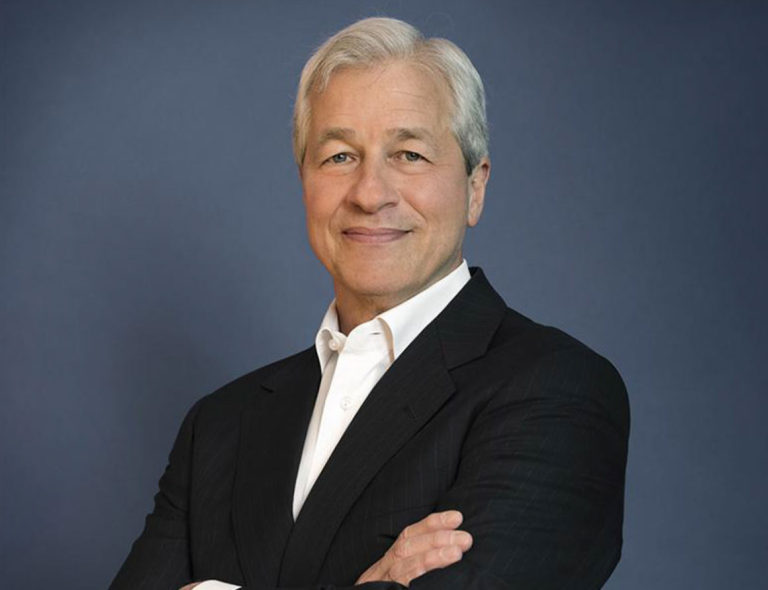
You get 5 minutes with Jamie Dimon, CEO of JPMorgan Chase – what do you ask him?
This is the situation I found myself in a few months ago. This is the same guy who was speaking at Davos a few days later and whose opinions can move markets and are frequently regurgitated in the financial press.
Knowing that he had a unique view of the economy I decided to frame our discussion around startup funding in today’s market. While our conversation occurred before the SVB collapse, I think recent events only strengthened his point of view.
The Question
“Given the tech bubble crash in the public markets half a year or so before venture market money began to dry up, is there a similar lag we should expect after those valuations come back before startup investing will return to previous levels?”
I know how difficult it has been to fundraise in this environment both personally and through companies I’m close with. I believe that things will eventually get better (they have to, right?), and what I was hoping to learn from Jamie was some sort of mile marker to keep an eye out for to help manage expectations.
Between July 2022 to September of 2022, roughly $81b was invested by VC’s globally. This is a lot of money, but it’s down by 53% from a year ago and 33% from the previous quarter. This relative decline is what is being felt so acutely right now.
This has created the most competitive fundraising environment of the last decade. The collapse of SVB and the near death experience that most startups and funds experienced has only further served to freeze funding, from what I hear for at least the next 3-6 months.
The Answer
Expecting a simple cause-and-effect analogy as an answer, I wasn’t prepared for what Jamie had to say. Rather than pointing out flaws in the economy or the stock market, Jamie replied in two words that made me realize I had made the wrong correlation,
“Interest rates.”
Jamie then explained how the relative and rapid rise in interest rates to nearly 5% have completely changed the calculus for potential investors and has been crushing startups and the developing world.
Jamie said that while he’s keeping an eye on Ukraine and even though the stock market has taken a hit, the underlying economy is doing well. We have $500B more in checking accounts than before the pandemic and consumer spending is up 10% vs a year ago and 40% since before the pandemic.
To highlight the benefits of investing with the Federal government, Jamie explained that the increase from 1% to 5% in nominal interest rates is a risk-free investment with guaranteed profits.
“If you had a hundred dollars and put it in the bank for a hundred years with an interest rate of 1%, that $100 would turn into $270. But if you took that same hundred dollars and put it in the bank for a hundred years at 5% interest, it would be $13,150.”
Given the fact that cash rich investors could earn such a high return by literally doing nothing, the baseline expectation for a return has risen for inherently riskier ventures.
Nothing embodies this more than SVB who despite 40 years of partnership with the ecosystem will now be remembered as the embodiment of investors turning away from riskier ventures towards more stable investment products.
How Are Investors Evaluating Startups in 2023?
As someone who is currently fundraising for a venture myself and who is close with several other companies, I’ve seen this pay out in real time. Prior to the collapse, the Series A criteria became the criteria for seed rounds and investors weren’t as willing to fund ideas as they were 18 months ago.
After SVB, it seems investors who were tentatively on the sidelines are fully there and are solely focused on deploying their capital to keep their existing portfolios alive vs looking to expand.
No more so than ever, investors expect startups to have done a sufficient amount of de-risking and development of your business ahead of time and to be as close to default alive as possible.
Founders are being forced to lower their ambitions and have more realistic milestones. Instead of focusing on how they are going to conquer the world, the focus is on making it in your own neighborhood first.
Ultimately, this is about being disciplined both as founders and investors. The challenge for many of us is that we’ve operated in an environment dictated by near zero interest rates for the past 10-15 years. Founders during this time haven’t had to be as pragmatic and disciplined as we are being asked to be now. Though difficult, I think that this will be good for the ecosystem at large.
Takeaway
“Is this temporary or a permanent change?”
The second question I asked Jamie in a side discussion that followed after our initial interaction was about what he thought the duration of what seems to be a drought in the venture capital market.
Jamie replied that the market is already pricing in a mild recess. And many people are expecting that rates will come down toward the end of 2023. And the question is, do they come down by a quarter basis point or do they come down by 2-3%?
When asked what advice he would give to startups, legendary investor Bill Gurley said “It’s simple, what I tell startups is that what we’ve lived through over the last 3 or 4 years- that was a fantasy.”
Regardless of how long it lasts, the fact remains that we are in the process of experiencing a paradigm shift in the startup ecosystem. There’s a Swedish proverb that says “every ship has a good captain in good weather.” As we collectively head towards further storms on the horizon, I think that we’ll begin to separate the real Founders from the Flounders.




